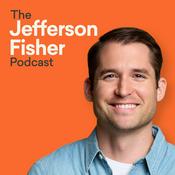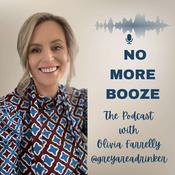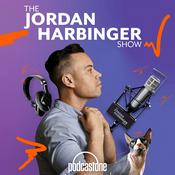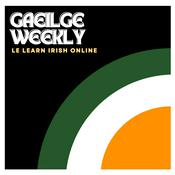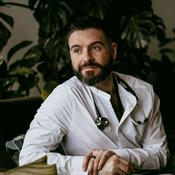16 episodes
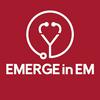
E16: Benzodiazepine-refractory status epilepticus
02/12/2025 | 46 mins.
Send us a textIn this episode of 'EMERGE in EM,' Dr. Mohamed Hagahmed and ICU doctor Dr. Obi Anozie discuss the critical neurological emergency of benzodiazepine-refractory status epilepticus (BRSE). They explore the pathology behind why BRSE occurs, the necessary aggressive treatment strategies, and second-line agent options including levetiracetam, valproic acid, fosphenytoin, propofol, and ketamine. They emphasize the importance of correct dosing, timely escalation of treatment, and thorough patient examination. The conversation also covers the need for a comprehensive approach to non-convulsive status epilepticus and the practical aspects of pre-hospital and ED management, including the use of paralytic agents like rocuronium over succinylcholine.Paper reference: Pelletier J, Merriman W, Koyfman A, Long B. Benzodiazepine-refractory status epilepticus: A narrative review. Am J Emerg Med. 2025;81:228-235. doi:10.1016/j.ajem.2025.01.046.

E15: Trauma in pregnancy: Perspectives and practices for clinicians
09/10/2025 | 57 mins.
Send us a textIn this episode of EMERGE, I sit down with Dr. Ricky Tripp to dive deep into the challenges and best practices of managing trauma in pregnancy. As your host, I guide the conversation through the latest evidence and NAEMSP guidance, real-life stories, and practical pearls that every clinician should know when faced with these high-risk, low-frequency events.We discuss the unique physiology of pregnancy, how to spot and manage shock, and the critical nuances of trauma assessment in pregnant patients. Dr. Tripp shares her expertise from the field, her work with AKOMA United, and her perspective as an emergency physician and EMS medical director.I also highlight the importance of community, communication, and understanding the psychosocial factors that impact patient care. Whether you work in the field or in the hospital, this episode will help you feel more prepared and confident when caring for pregnant trauma patients. Join me for expert insights, actionable tips, and a reminder of the power of teamwork and compassion in emergency medicine.

E14: 7-Hydroxymitragynine (7-OH) toxicity with Dr. Pizon
05/9/2025 | 25 mins.
Send us a textIn this episode of EMERGE, I sit down with my friend and colleague, Dr. Tony Pizon, Chief of Medical Toxicology at UPMC, to dive into a topic that’s been showing up more and more in our emergency departments: 7-Hydroxymitragynine (7-OH).I wanted to understand what 7-OH is, how it’s connected to Kratom, and why it’s suddenly making headlines. Tony and I break down the science, discuss the clinical effects, and talk about why products like vapes and gummies containing 7-OH are so concerning—especially when they’re packaged to look like candy and marketed as “natural.”We share real cases, practical management tips (including when and how to use naloxone), and highlight the risks for kids and the importance of public health reporting. My goal with this conversation is to give you the latest insights, actionable advice, and a better understanding of how to recognize and manage this emerging toxicology threat.Whether you’re a fellow healthcare professional or just want to stay informed about what’s happening in emergency medicine, I hope you find this episode as eye-opening and useful as I did.

E13: Trauma talks with Zaf Qasim
25/8/2025 | 37 mins.
Send us a textIn this episode of EMERGE, I had the pleasure of speaking with Zaf Qassim, an associate professor of emergency medicine, about critical interventions in trauma care. We discussed the TRAUMOX2 trial, which questions the reflexive use of high-flow oxygen in trauma patients and suggests that a restrictive oxygen strategy can reduce atelectasis without increasing other complications. We then contrasted delayed sequence intubation (DSI) with rapid sequence intubation (RSI) in trauma patients, highlighting how DSI can significantly reduce peri-intubation hypoxia. Lastly, we explored a study comparing non-invasive blood pressure monitoring to arterial BP monitoring in critically ill patients, emphasizing the inaccuracies of non-invasive methods, especially in severe cases, and the value of using arterial lines. The episode aims to encourage clinicians to reexamine traditional practices and adopt evidence-based approaches for better patient outcomes.Links to papers discussed in this episode:https://jamanetwork.com/journals/jama/fullarticle/2827980https://pubmed.ncbi.nlm.nih.gov/37058727/https://pubmed.ncbi.nlm.nih.gov/39192296/

E12: Medetomidine toxicity and withdrawal
07/7/2025 | 41 mins.
Send us a textThis episode of the EMERGE, join me and Dr. Mike Lynch, an expert in emergency medicine, medical toxicology, and addiction medicine. The discussion delves into the public health emergency of medetomidine-related toxicity and withdrawal. Dr. Lynch shares insights from real cases, emphasizing the clinical red flags and management strategies for medetomidine withdrawal. We discuss the transition from Xylazine to medetomidine in the drug supply, the role of naloxone, and the risks of misidentifying opioid-related cases. Key points include the need for extended observation in the ED, the potential requirement for ICU care, and the effectiveness of dexmedetomidine in managing severe withdrawal symptoms. The episode also highlights the importance of medication for opioid use disorder (MOUD) and the evolving drug supply landscape.
More Education podcasts
Trending Education podcasts
About Emerge in EM
Listen to Emerge in EM, Begin Again with Davina McCall and many other podcasts from around the world with the radio.net app

Get the free radio.net app
- Stations and podcasts to bookmark
- Stream via Wi-Fi or Bluetooth
- Supports Carplay & Android Auto
- Many other app features
Get the free radio.net app
- Stations and podcasts to bookmark
- Stream via Wi-Fi or Bluetooth
- Supports Carplay & Android Auto
- Many other app features


Emerge in EM
download the app,
start listening.





